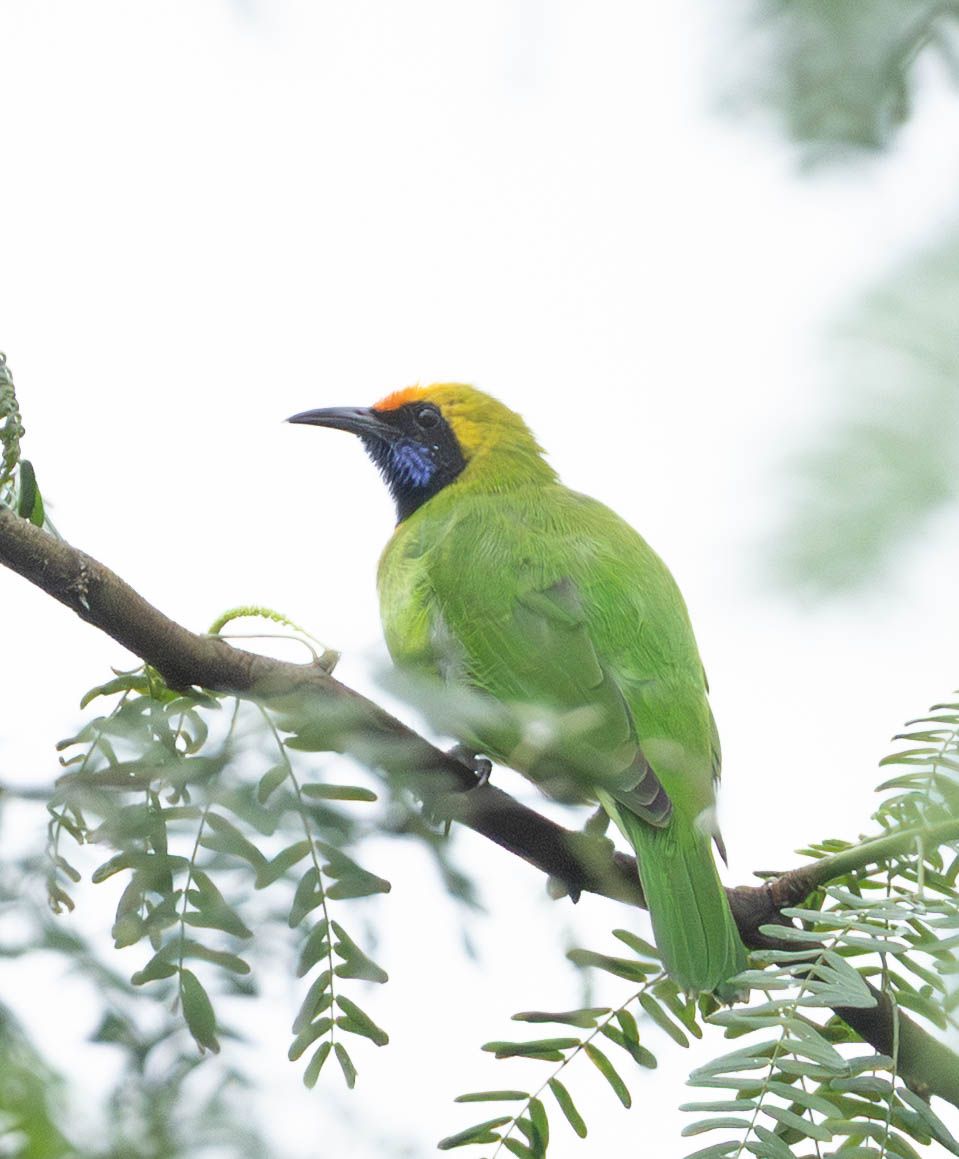Rare visitors Rock Thrush and Leafbird come calling
The village of Saketri, behind Sukhna Lake, has for many years been a birding hotspot. Located between Chandigarh and the Kansal and Nepli forests, it has long hosted a fascinating mix of seasonally migrating birds — Paradise Flycatchers and Indian Golden Orioles flying up from South India during the spring breeding season, and small songbirds such as Black Redstarts and Wheatears from Ladakh during winter.
A vast tract of uncultivated land stretching from Saketri to the Chandigarh IT Park has provided an excellent habitat, where over a hundred species have been recorded over the years. Sadly, like all open spaces, this location has now come under the hammer of ‘development’. It is today known as MDC, and it was Sector 7 of MDC that recently became the stomping ground for birdwatchers when local birder Dr Suman Singh, on her regular early morning round, photographed a bright green bird. It turned out to be a Golden-fronted Leafbird, hitherto not seen around Chandigarh, as it lies well beyond the bird’s known eastern range. The moment the photograph was shared, local birders, including Pushkar Bali, made a beeline for the location.
Amid the excitement, Bali photographed not the Leafbird, but a rather plain-looking thrush. This turned out to be a rare migrant from southern Europe and Central Asia — the Rufous-tailed Rock Thrush (Monticola saxatilis). Once the photo was posted on the WhatsApp group for Rare Bird Alerts, the news spread like wildfire, drawing not only local birders but also twitchers and photographers from as far away as Mysore!
For the next six days, the Rufous-tailed Rock Thrush became the star of Chandigarh’s birding scene before continuing on its migratory journey to Africa.
It lives high in the alpine and subalpine zones of southern Europe, Central Asia, and northern China. This myna-sized bird favours rugged, stony mountain slopes with sparse scrub vegetation — often well above the tree line. During May and June, it builds its nest on rocky ledges, safely tucked away in its harsh mountain home.
In its breeding finery, the male Rock Thrush is a dazzling sight, dressed in bright blue and rich rufous (rusty-red) plumage. The female, in contrast, is cloaked in earthy, inconspicuous tones that help her blend into the landscape. Unfortunately, when the bird appears in the Indian subcontinent during its winter migration, the male has already moulted out of his vivid breeding colours and looks rather dull and streaked — though the trademark rufous tail still glows in the sunlight.
True to its name, the Rock Thrush is often seen perched atop a boulder, heap of rubble, or rocky outcrop, scanning the ground for insects or small reptiles before pouncing in typical thrush-like fashion. The male is known for his melodious song, delivered from an elevated perch as he serenades potential mates.
Unlike waterfowl or starlings that travel in large, conspicuous flocks, the Rufous-tailed Rock Thrush is a solitary traveller. European populations migrate southwards to sub-Saharan Africa, while those from Asia journey across Central and South Asia to escape the northern winter.
Sightings in India are rare and scattered, with documented records from Ladakh and Kashmir, Pong Lake in Himachal Pradesh, Kutch in Gujarat, Jaisalmer in Rajasthan, and even as far south as Bengaluru. Beyond India, its winter visits have been noted in Nepal, Pakistan, and western China.
 Golden-fronted Leafbird. Photo: Rima Dhillon
Golden-fronted Leafbird. Photo: Rima Dhillon
The Golden-fronted Leafbird (Chloropsis aurifrons) is draped in brilliant leaf-green plumage crowned by a golden halo — its very name a perfect description of this jewel-toned bird. Chloropsis comes from Greek, meaning ‘green appearance’, while aurifrons literally means ‘golden-fronted’.
If the male is flamboyantly coloured in emerald green with a golden crown and a turquoise-blue moustachial stripe, the female — though less brilliant — is the epitome of elegance. Feeding on fruit, nectar, and insects, they flit about the forest canopy, often hiding in plain sight. Leafbirds play a vital role in sustaining the forest’s rhythm of renewal by assisting in pollination.
Equally fascinating is their gift for mimicry — they can imitate the calls of drongos and bulbuls, perhaps to defend their territory or confuse rivals. In many parts of rural India, their presence in orchards is considered a good omen, believed to herald a rich harvest. Their bright colour and cheerful song have long been thought to bring good luck, life, and renewal — making this radiant bird the forest’s own messenger of harmony.
— The writer is president of Chandigarh Bird Club
Comments